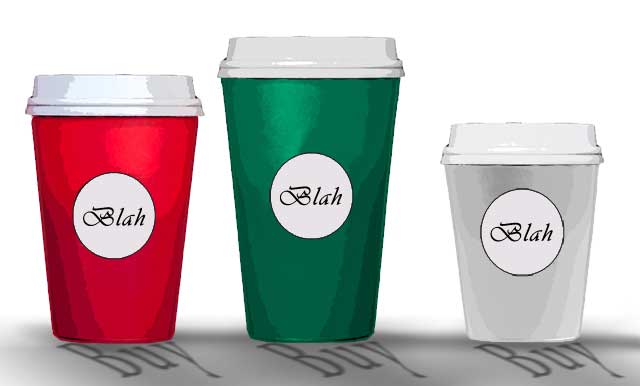|
Some of the best designs are the simplest designs. When it comes to products, minimalism equates to “easy to use” and users like that. These products consistently get the job done, and in very few steps. When it comes to art and decorative product design, it sometimes is a very different story. Take the recent Starbucks coffee cup frenzy (#starbucksCoffeeCup). Some people are all in a fluff that there aren’t any festive designs during this year’s Holiday Coffee Cup season (Starbucks brews controversy). A minimalist hexadecimal #f20b2d red, along with the standard logo is the design choice. I think it’s brilliant. Not only is it an elegant, sleek, understated design. This design breaks away from the expected holiday versions customers have come to expect. It does this all without changing any of the functionality of the cup – it still holds your beverage of choice! As a result of this somewhat radical move, this secular corporation is getting a ton of free publicity. Although it’s not all good publicity, it is publicity nonetheless. AND as we all know, there is no such thing as bad publicity. So why are people so upset? There aren’t any offensive designs or messages on the cups. They are blank. Is the starkness the controversial message? We are in a point in history when we are overloaded with texts and visuals. It can seem somewhat shocking not to receive clues as to how we are to think and act in this seasonal moment. How revolutionary. Controversy and a blank canvas is nothing new – especially in the art world. Take for example Alexander Rodchenko’s triptych painting Pure Red Color, Pure Yellow Color, Pure Blue Color (1921). Each monochrome canvas lacks subject matter. For that period in history, this piece made a major statement about the ways that art functioned prior to the Russian revolution. Rodchenko’s painting was intended to bring death to traditional painting, and open new doors for artistic expression. As noted in The Modern art story, concern for artistic composition and design was replaced with construction. Through the technical analysis of modern materials, artists hoped their “investigation would eventually yield ideas that could be put to use in mass production, serving the ends of a modern, Communist society.” Although the Constructionist movement in Russia ended because of the Bolshevik regime’s hostility towards avant-garde art, it continued to flourish in other parts of the Western world for some time (mainly Germany). As for Starbucks and Holiday Coffee Cup season, it’s unlikely there are any subliminal messages in their minimalist cup design beyond you associating red, white and green with Christmas. The colours are all about marketing. Like any good corporation, Starbucks hopes to stimulate you so you spend money on the perfect beverage (red is known to stimulate, green to represent money, white to represent perfection). The controversy, much like art, lies in how you choose to interpret this year’s design – or lack thereof. You either like it or you don’t. Either way, a cuppa joe is still a cuppa joe. If you liked this blog post, you may also like: |
Categories
All
|
Privacy policy
Copyright 2024 Patricia Pinsk
